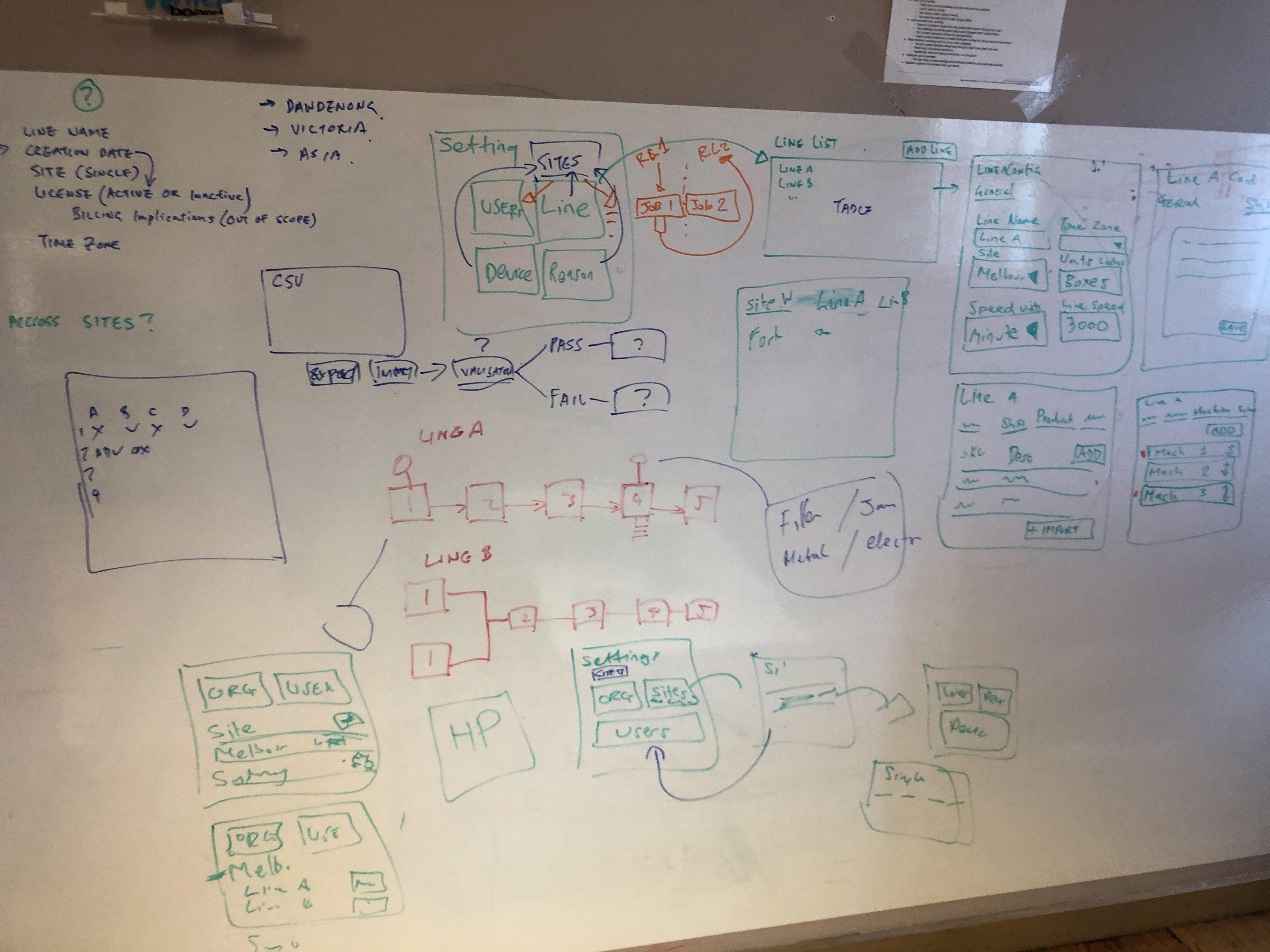OFS Broccoli is an Analytics and IoT platform that gives manufacturers better visibility over their production processes and helps them to pinpoint areas where they can improve efficiency. The areas of improvement that OFS highlights include how fast machines are running, where breakdowns occur on the production line, and how much waste is occurring during the production process.
My part in the project was as the sole UX designer working alongside Product Managers, Developers, and the Leadership team. Specifically I carried out:
.png)
.png)
To better understand our users, I took part in a number of factory visits to see directly how our customers were using the current product and gain more context around the daily lives of people working in the manufacturing industry.
Along with observing workers going about their daily activities, I also had the chance to talk to Machine Operators, Production Planners, Engineers, and Shift Supervisors about the main problems they face on a daily basis.
By visiting factories and seeing first hand how they operate, I was able to get to the core of what was most important to our users.
.jpg)
With a product that addresses similar pain points already in the market, it was important to leverage as much usage data from the current product as we could. By deep-diving into our analytics platform (Pendo) we were able to see what features our customers value the most and what features weren't used.
These insights showed us where we as a team needed to focus our attention and which features we could leave out of the MVP or exclude from the new version entirely.
Interviewing people within the manufacturing space gave me further insights into the main issues they face on a day-to-day basis and helped uncover areas of opportunity. Key insights that were uncovered include what metrics were most important for users to track, what daily rituals people in the manufacturing space undertook and how people report on their production performance.
%20(1)%201.png)
Early in the design process, I believe it’s essential to explore a wide range of ideas and test multiple solutions before narrowing in on the final UI.
By holding co-design sessions early in the design phase, I was able to see how others thought about the problem space and were able to leverage stakeholders' knowledge, many of whom have decades of experience solving problems within the manufacturing industry.

Creating click-through wireframes allowed the team to focus on the core elements that would make up OFS Broccoli. Rough versions of the application also gave me a chance to get feedback early from both stakeholders and customers without getting bogged down and high fidelity elements.
.png)
One main requirement for OFS Broccoli is that it needs to be user-friendly for a wide range of end-users. These users range from machine operators on the factory floor who might be using the platform in a noisy and dim factory environment to senior management who have more experience using analytical platforms.
Usability testing was carried out by a cross-section of our userbase to ensure different user types were accounted for. Parts of the application that got tested were the key features that users would be using over 80% of the time.
.png)
Being a small team, it didn’t make sense to build out our own design system therefore we chose to use a tried and tested open-source design system, Material Design.
While designing the UI of OFS Broccoli, I was adamant to follow the Material Design guidelines as close to possible. In doing so, we ensured the UI was consistent and followed proven usability best practices.
As the UX designer in charge of the Design System process, I also spent time educating people within the development team on when certain elements should be used and why they were used. This practice empowered developers to make their own calls if they weren’t sure how something should be implemented.
%20(1).png)
Working on the OFS Broccoli project allowed me to further develop my skill set, namely strengthening my research abilities and learning how to design for people in an industry I hadn't been exposed to before.
By involving stakeholders throughout the entire process, I was able to leverage their expertise as well as make sure everyone was aligned on the product we were building.
During the entire process, I ensured the end-users was kept at the center of the solutions we developed and made sure all decisions were backed by research or proven design patterns.
Email: steven.jasionowicz@gmail.com
Mobile: +64 27 411 9051